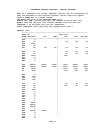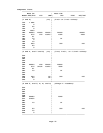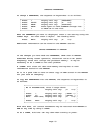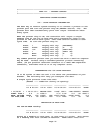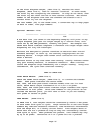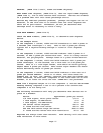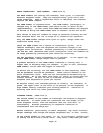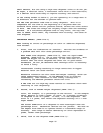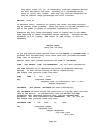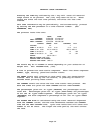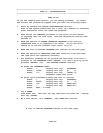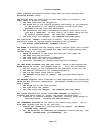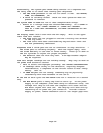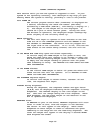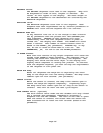small amounts, but are using a high rate dispense valve to do the job.
An auger, a vertical valve, a horizontal valve with a flow restrictor,
or a smaller valve would help to improve accuracy and control.
If the timing number is below 5, you are operating in a range were it
is difficult for the blender to perform well.
The LAG time parameter adds time to every dispense. This is to
compensate for the time at the beginning of a dispense when the
solenoid valve shifts and air pressure builds, before the valve starts
to move. LAG times are always set slightly longer then the necessary
minimum. If a calculated dispense time is very short, the Lag time
that is added, while small, may interfere with accuracy, and cause an
over dispense.
PERCENTAGE ERRORS: (DATA line 1)
When looking at errors of percentage of color or additive dispensed,
look further.
1. First, look for indications of "retries". Retries are evidence of
a problem that will also cause percentage errors.
When FIRST time dispense, (DATA line 3), does not equal FINAL
dispense, (DATA line 1), one or more retries have occurred. This
means the hopper ran out of material, or the flow rate is so
erratic that the first dispense was short for no good reason.
Parameters _RT and _RP determine what shortage error is necessary
to force a retry.
Inconsistent loading resulting in large variations in hopper
material level can cause retries.
Excessive vibration can also cause bad weight readings, which can
cause unwarranted retries. If the BAILOUT line is printing
occasionally, then vibration is most likely causing this.
Increasing the BAILOUT parameter should fix this.
A LAG time set too high may cause retries to overshoot their mark
resulting in over dispensing.
2. Second, look at ACTUAL weight dispensed (DATA line 1).
Color, for example, is a percentage of the natural. In the example
above, Natural is 1908.3 grams, so color, at 4 percent of Natural,
is targeted to be 76.3 grams. In fact, 77.6 was dispensed. The
error is 1.3 grams, well within the expected accuracy of a 1 inch
auger feeder.
The actual GRAM error of a dispense is more meaningful then the
percentage error. Mechanical devices are not perfect. The most we
can expect from them is to operate within a reasonable range of
accuracy. This range is better defined by an error expressed in
grams, rather them percentage.
3. Third, look at the dispense TIME (DATA line 3).
Page 79



